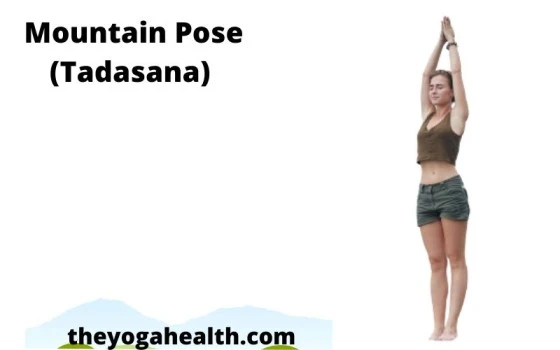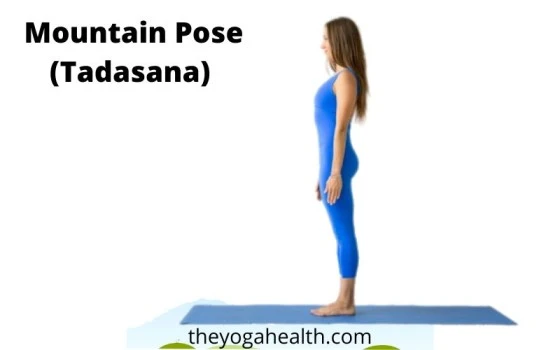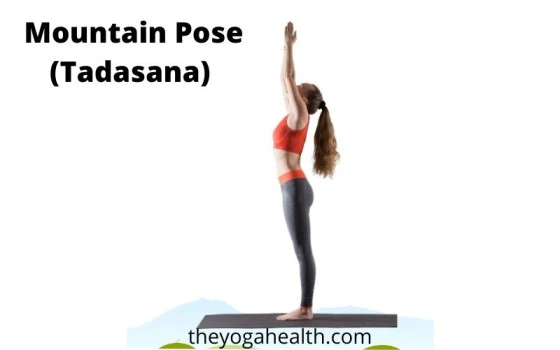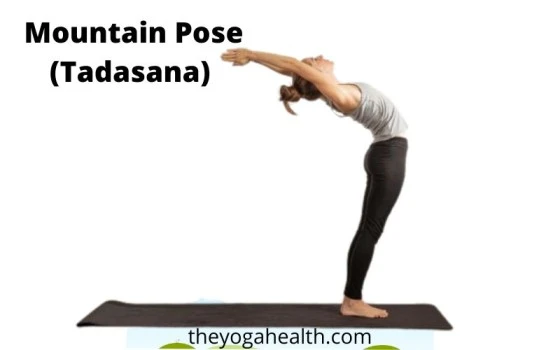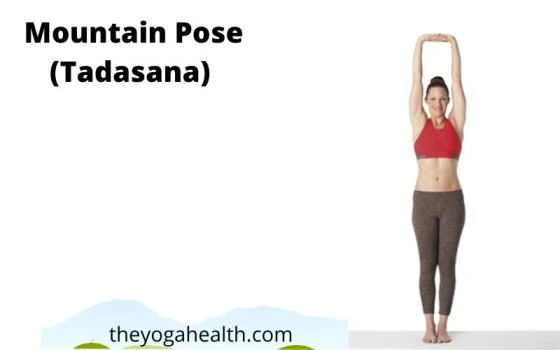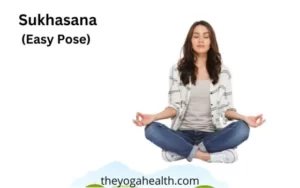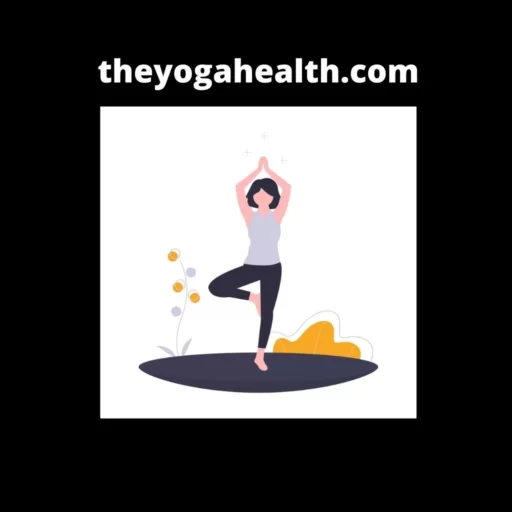Mountain Pose or Tadasana pose is one of the most basic standing pose among the yoga poses. People of all ages whether they are children or old age people can do this asana very easily. In fact, everybody can do this asana, except of course the disabled persons.
Table of Contents
Tadasana (Mountain Pose)
Tadasana comprises two Sanskrit words, ‘Tada’ and ‘Asana’. In Sanskrit language ‘Tada’ means ‘mountain’ and ‘Asana’ means ‘Pose’ or ‘Posture’. This asana is also known by another name of the ‘Samasthiti’. Sama means ‘upright’ or ‘straight’ and ‘Sthiti’ means ‘standing still’ or ‘steadiness’.
This asana falls in the category of Hatha Yoga. This asana should also be performed empty stomach during the morning time for maximum benefit.
Although this asana can also be performed at other times of the day but always make sure that this asana is performed after more than 3-4 hours you have had your meals.
Tadasana Basic details:
| Sanskrit Name | Tadaasana or Samasthiti |
| Meaning | ‘Tad’ means ‘Mountain’ and Asana means ‘Pose’ or ‘Posture’ |
| Difficulty Level | Beginner |
| English name | Mountain Pose |
| Position | Standing erect on the floor |
Mountain Pose Variations:
Steps For Variation – I
- Stand straight on the floor with your feet together, the heels and the big toes should be touching each other. Stretch the feet and all the toes flat on the floor.
- Tighten your knees and pull up your knee caps.
- Contact your hips and also pull up the muscles at the back of your thighs.
- Stomach should remain in, chest out and forward, keep your spine stretched up and neck straight.
- The weight of the body should be evenly distributed on both feet and not on the heels or the toes.
- Keep your hands hanging nearby your body, fingers closed and palms stretched.
Stay in this position for few seconds breathing deeply.
Kindly check the above picture to see how the pose would look.
Steps For Variation – II
After performing the asana from points 1 to 6 as mentioned above, inhale and slowly raise your foot sole areas, making sure that your body weight is now on your toes.
Now stretch your whole body upward from feet to your head. Remain in this position as long as you can and then exhale and slowly bring down your foot fully on the floor.
In the beginning, you can do it for few seconds, and then gradually you can increase the timings up to 1 minute.
Steps For Variation – III
After performing the asana from points 1 to 6 as mentioned above, inhale and slowly raise your hands up in the air over your head, as shown in the above picture.
Now join your palms together, over your head in a ‘Namaste’ mudra. You inhale as you raise your hands over your head.
Now Stretch your whole body upwards from your feet to the tip of your fingers. Remain in this position as long as you can and then exhale and slowly release your stretch and lower your hands down. You can repeat this pose a few times as per your strength and experience.
Steps For Variation – IV
Once you became accustomed to variation no. III and you want to challenge your self more then you can do this variation. After performing the asana as pointed out in the variation No. III, when you have inhaled and your hands are up in the air.
At this point, you will move back your upper body as far as possible for you, stretch your body as fully. Remain in this position till you can hold it, then slowly exhale and release your stretch and bring your body forward.
Repeat a few times as per your strength.
Steps For Variation – V
After performing the asana from points 1 to 6, slowly inhale and bring your hands in front, interlock your fingers and stretch your arms straight over the head, palms should be facing up.
Simultaneously, raise your foot sole area, and stand on your toes, making sure that bodyweight is entirely on the toes only.
Now feel the stretch in your whole body from feet to your head up to the stretched palms facing up.
Stay in this position for few seconds and then lower your feet flat on the ground while breathing out. It can be repeated again for few times as per your yoga routine.
If this asana is difficult to perform with feet together then it can also be performed keeping feet shoulder length apart.
Kindly check the above picture to have any idea how to pose would look like.
Mountain Pose in yoga advantages
People generally do not pay attention to the correct way of standing. Some people stand putting the whole body weight on one leg and others stand on putting the entire weight on their heels or on the inner or outer edges of the feet.
These kinds of faulty standing positions can bring many deformities in the body posture. It can also hamper the elasticity of the spinal code. Therefore, it is important to master the art of standing correctly.
Mountain pose benefits
Following are the benefits of this pose
- The Height-Increasing Asana: This Pose holds significant importance in boosting one’s height, making it especially crucial for growing children. Regularly practicing this asana enables them to attain their optimal height potential. By stretching the entire body from head to toes, Mountain Pose promotes height growth in individuals of all ages.
- Weight Loss Benefits: This Pose is a valuable asset for individuals aiming to shed excess weight. Those struggling with obesity can immensely benefit from incorporating Tadasana into their routine along with other yoga poses. The stretching involved aids in burning calories and boosting metabolism, assisting in weight management.
- Strengthening the Leg Muscles: This asana very effectively give strength to the leg muscles because in this pose the lower legs, upper legs and thighs are stretched to their maximum levels.
- Relief from Backache: In our modern lifestyle because of prolonged periods of sitting in offices and homes people suffer from backache. This Pose comes to the rescue by providing relief from back muscle pain. In this pose the stretch of the spine and engagement of core muscles help to promote better spinal health and relieve back discomfort.
- Toning Hips, Thighs, Legs, and Feet: This Pose is a very effective pose for toning and giving strength to the lower body. In this pose the hips, thighs, legs and feet are engaged that helps in achieving lower body flexibility and also tones muscles.
- Enhancing Concentration and Mental Sharpness: This Pose benefits not only the body but also have positive impact on the mind of the practitioner. Regular practice of Tadasana enhances concentration levels and sharpens cognitive abilities. It is particularly advantageous for students seeking improved focus in their studies and daily tasks.
- Mood Booster: This Pose plays a role in combating negative emotions, dullness, and depression. Deep breathing and the meditative qualities of this pose have a relaxing impact on the mind, which helps in promoting emotional balance and peace.
- Regulating Blood Flow and Oxygenation: This Pose has the ability to control blood flow from the head to the toes and it is one of the main advantages of this pose. Because of the increased circulation, oxygen is certain to reach every part of the body, enhancing overall health and energy of the practitioner.
Mountain Pose is also known as the ‘Palm tree pose’ resembling the tallness of the Palm tree, so it is particularly beneficial for growing children.
Mountain Pose Precautions
- Perform this asana preferably in the morning time after clearing your bowels.
- If you have to do this asana at any other times then there should be a gap of 4 hours between your last meal and the asana.
- If you have undergone any operation or surgery then this asana should be avoided at least for 6 months.
- If there is any injury in the body then also this asana should be avoided because this asana stretches the whole body so it can have an adverse impact on the injury.
- Strictly prohibited for pregnant women.
- If you feel any weakness or dizziness while doing this asana then it should be stopped immediately.
Conclusion For Mountain Pose:
Mountain Pose (Tadasana) is a basic level asana. It is one of the easiest and simplest asana, which everybody regardless of their age can perform. It is a must asana for growing children and for beginners who are planning to bring yoga routines into their lives for various health benefits.
FAQs For Mountain Pose:
Q1. What is Mountain Pose?
This Pose is a fundamental yoga pose that serves as the foundation for many standing postures. It involves standing tall with feet together, aligning the body, and focusing on steady breathing.
Q2. How do I do Mountain Pose?
To perform this Pose, stand with your feet together, heels slightly apart. Keep your spine straight, shoulders relaxed, and arms by your sides. Distribute your body weight evenly on both feet and also engage your core. Take some deep breaths and hold the position for as long as comfortable to hold.
Q3. What are the benefits of Mountain Pose?
This Pose offers numerous benefits, including improved posture, enhanced body awareness, and increased focus and concentration. It strengthens the legs, ankles, and core while promoting better alignment of the spine.
Q4. Can Mountain Pose help with stress and anxiety?
Yes, this Pose can be beneficial for reducing stress and anxiety. Focusing on the breath and feeling yourself in the present moment, will help calm your mind and induces a sense of tranquility.
Q5. Is Mountain Pose suitable for beginners?
Absolutely! this Pose is an excellent starting point for beginners as it is relatively simple to perform. It lays the groundwork for more advanced yoga postures and helps beginners get familiar with their body’s alignment.
Q6. Can I practice Mountain Pose daily?
Yes, you can practice this Pose daily. Since it is a gentle and low-impact pose, it’s safe for regular practice. Daily sessions can help improve your posture and build strength gradually.
Q7. Does Mountain Pose have any variations?
Yes, there are several variations of this Pose to suit different needs and levels of experience. Some variations involve raising the arms overhead or interlocking the fingers behind the back, enhancing the stretch and benefits.
Q8. Can Mountain Pose be practiced during pregnancy?
Yes, this Pose is generally safe during pregnancy, but it’s essential to consult with a qualified prenatal yoga instructor or healthcare provider before practicing any yoga during pregnancy.
Q9. How does Mountain Pose improve posture?
This Pose aligns the body properly, pulling the shoulders back and opening the chest. Strengthening the muscles in the legs, back, and core, this pose helps support an upright posture.
Q10. Is there anything I should be cautious about when doing Mountain Pose?
While this Pose is considered safe for most people, individuals with certain medical conditions, such as severe back issues or balance problems, should practice with caution or seek guidance from a yoga instructor or healthcare professional.
Q11. Can I combine Mountain Pose with other yoga poses?
Yes, this Pose can be combined with other standing poses, forward bends, or gentle stretches as part of a yoga routine. It complements various postures and can be a starting or ending point in a sequence.
Share your experience of doing this pose and let us know if you have any questions or comments regarding this Pose in the comments section below.


